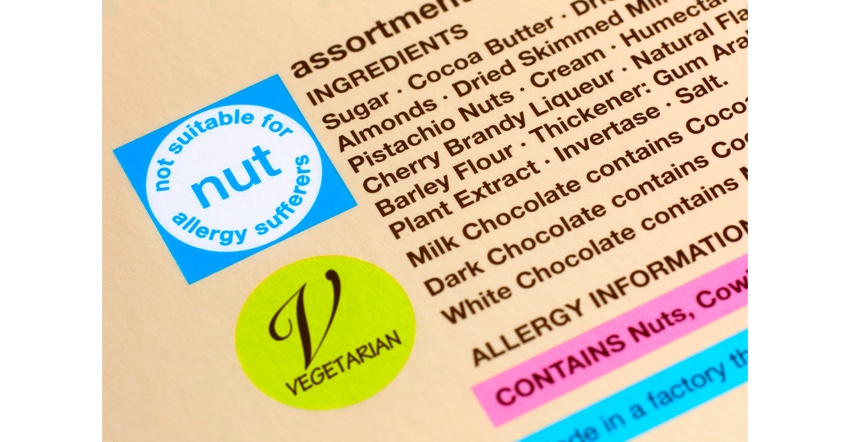Protect Yourself from a Food Recall
Labeling error is the top reason for food recalls.
February 16, 2023

Kristen Kazarian
Recalled products are a given in food manufacturing — the system is not perfect.
In the first quarter of 2022, the number of consumer product recalls jumped 63.8%, reaching their highest level in more than five years. The number of units recalls increased 161%, according to the 2022 Recall Index report by Sedgwick, a global provider of technology-enabled risk, benefits, and integrated business solution. Food recall events initiated by the FDA declined 12.7%, while their average size soared 328.4% to more than 1.3 million units.
Recalls and Reasons
Since the beginning of this year, 29 recalls by the FDA have been noted. Of that number, a total of 21 were food products, with 17 due to undeclared allergens including milk, eggs, soy, wheat, or nuts. As recently as February 6, more than 400 products by Fresh Ideation Food Group LLC, including breakfast sandwiches and fruit cups, were recalled due to possible listeria contamination.
Only one pet food has been recalled so far this year, six for pharmaceuticals, and one personal care recall.
For food products alone, mislabeling of food allergens is the top reason of recalls, according to the FDA. From undeclared egg, milk, nuts, wheat, and more, there is a step that is being missed. Listeria and salmonella are always of major concern when it comes to fresh foods, but for most food recalls, it is due to label error.
Labeling of Allergens
According to the FDA, allergen issues are one of the leading causes of food recalls, which can have major impacts across the entire supply chain. The FDA website reveals that “recall data shows that such labeling errors occur most commonly because of the use of the wrong label. This may happen when similar products made with different ingredients, including allergens, are sold in look-alike packages.”
In November 2022, the FDA issued two guidance documents about food allergen labeling requirements to help the food industry meet the requirements to list any major food allergen on the labels of FDA-regulated foods.
One of the guidance documents is an FDA food allergen draft guidance titled “Questions and Answers Regarding Food Allergens, Including the Food Allergen Labeling Requirements of the Federal Food, Drug, and Cosmetic Act (Edition 5); Guidance for Industry.” This edition includes new and revised questions and answers related to food allergen labeling, including requirements in the Food Allergy Safety, Treatment, Education, and Research Act of 2021 (FASTER Act) and the Food Allergen Labeling and Consumer Protection Act of 2004 (FALCPA).
The FALCPA amended the Federal Food, Drug, and Cosmetic Act (FD&C Act) by defining the term “major food allergen” and requiring that foods or ingredients containing a major food allergen be specifically labeled with the name of the allergen source. The law identified eight foods as major food allergens (see list below). The FASTER Act, among other things, added sesame to the list of major food allergens effective January 1, 2023, which made it the ninth major food allergen recognized in the US.
The current list of major food allergens recognized by the US include:
Milk
Eggs
Fish
Shellfish
Tree nuts
Peanuts
Wheat
Soybeans
Sesame
The Food Safety Modernization Act (FSMA), which was enacted in 2011, pushed a lot of processors to make changes in how they manufactured food. Through regulation, every factory must comply with good manufacturing practices (GMP), and the owners can be personally liable for any infractions. One of the FSMA requirements is that all food manufacturing facilities are inspected at least once per year to identify risks, including allergens. If an inspector has any concerns about a facility, they can perform a full audit without notice.
Food, pharmaceutical, and other industry manufacturers can go to the FSMA site and find compliance and implementation tools to abide by. Here is an up-to-date list on product recalls by the FDA. And here are the current USDA recalls.
Six Steps to Prevent Recalls
Make sure your labeling is accurate. Moving from one product line to another is an easy way to miss the need to change labels, for example: running a line of bread to a new line of gluten-free bread.
Look at your facility layout. Verify that the material storage and handling, separation of processing lines, personnel placement, equipment selection, and sanitation are on point.
Follow the FDA. The agency’s guidelines and resources have much information to prevent a recall. If you produce meat, follow the USDA site.
Systemize approved labels. Use the formula and ingredient specifications and create a system. Every ingredient received into preproduction should be checked against the specification sheet for that ingredient.
Company training. Make sure all personnel on the processing/packaging lines are aware of which products are running at a given time on a given day. With each shift change, there should be communication.
Follow the industry. If a like-manufacturer has found particulates or listeria in its products, do you use the same supplier?
Keep an eye out: In the April issue of Powder & Bulk Solids, we talk about food safety and more steps to keep your products safe.
You May Also Like


